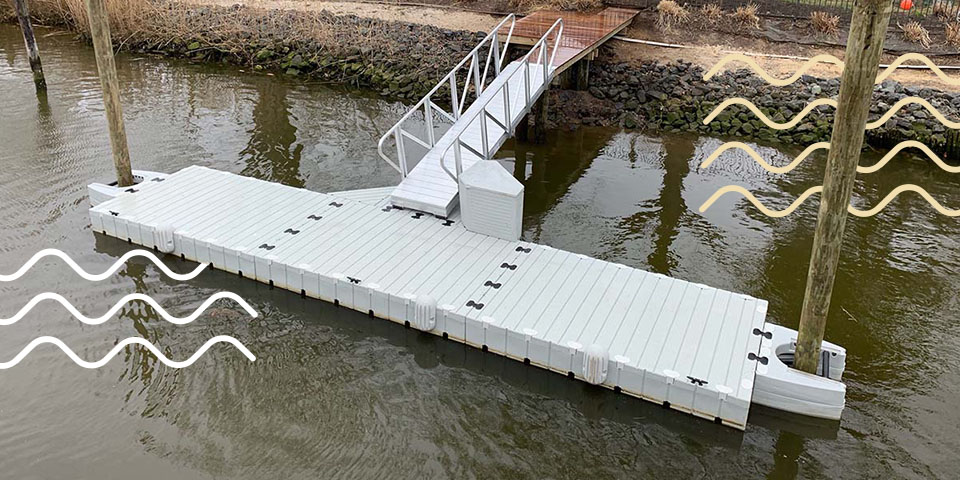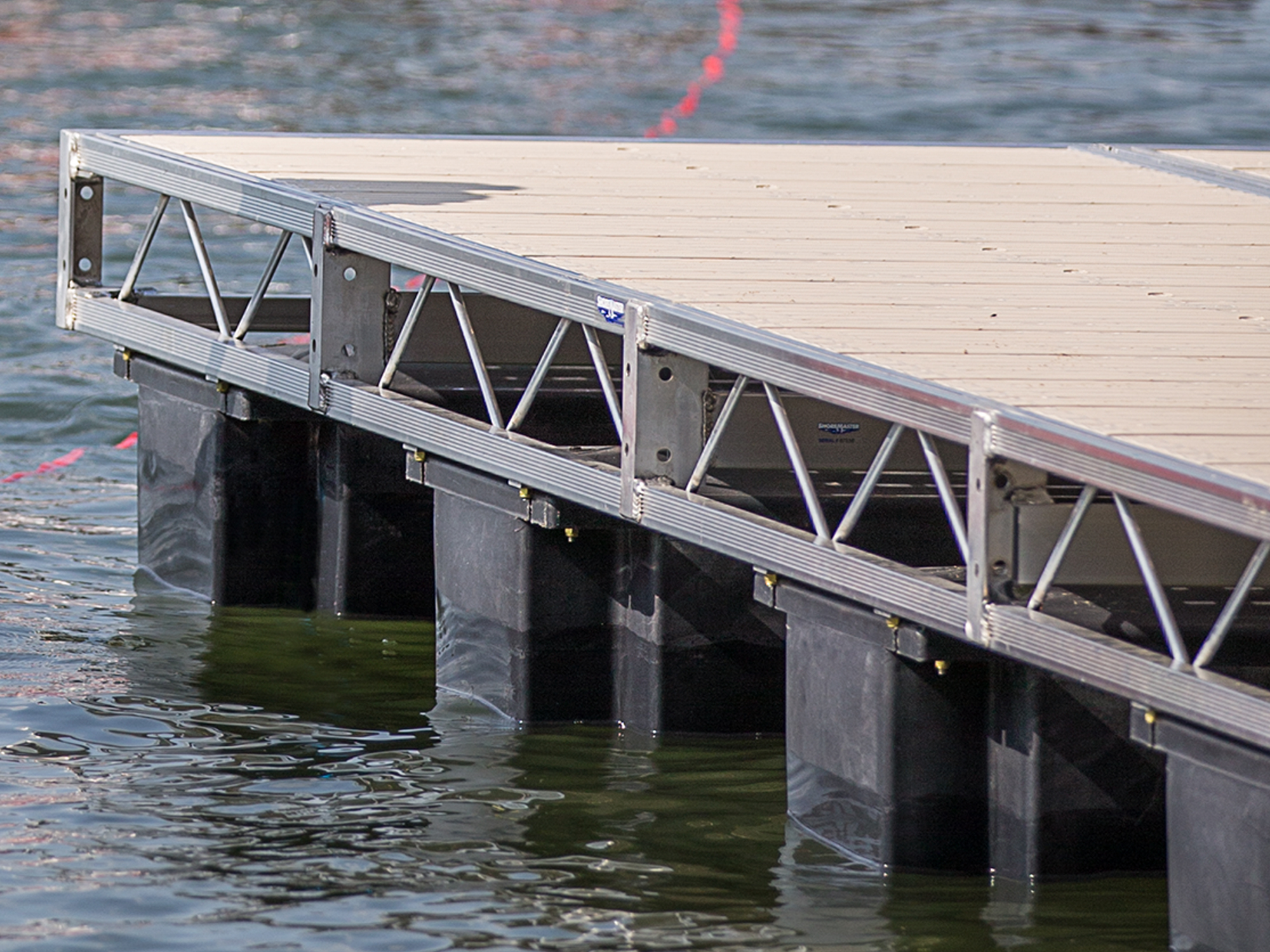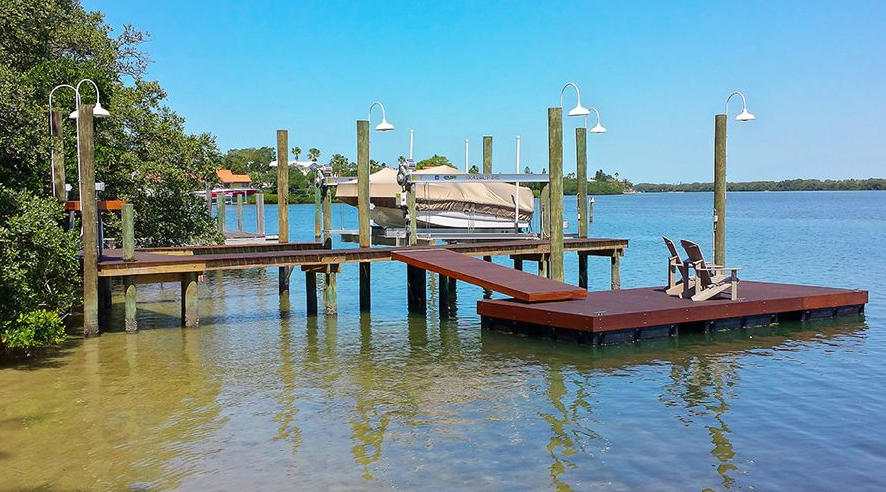Browsing the Options: Choosing the Right Dock Company for Your Floating Dock Job
Browsing the Options: Choosing the Right Dock Company for Your Floating Dock Job
Blog Article
Upgrade Your Beachfront With Sturdy Floating Docks
Updating your waterside with sturdy floating docks can considerably improve both functionality and appearances, giving a flexible service for various water activities. With a variety of materials offered, consisting of low-maintenance choices and typical wood, selecting the ideal dock can complement your individual design and meet useful demands.
Advantages of Floating Docks
Floating docks deal a multitude of advantages that improve their appeal for different maritime applications. One of the primary benefits is their flexibility to changing water levels - dock company. Unlike traditional fixed docks, floating docks fluctuate with the tide, making certain constant availability for watercrafts and boat regardless of environmental problems. This feature substantially minimizes the danger of damages to vessels, as they stay securely moored also throughout changes in water deepness.
In addition, floating docks are less complicated to set up and relocate, supplying flexibility for momentary or seasonal usage. Their modular style enables personalization to fit details requirements, whether for personal marinas, property watersides, or business applications.
Furthermore, floating docks develop very little disturbance to the water atmosphere, preserving regional ecosystems and decreasing the possibility of disintegration. They likewise supply boosted safety and stability for customers, as their buoyant nature offers an extra flexible surface area than inflexible structures.
In addition, floating docks can facilitate a diverse range of tasks, such as angling, swimming, and entertainment boating, making them a beneficial asset for waterside growth. Their convenience and practicality make floating docks a favored selection for a variety of naval tasks.
Selecting the Right Materials
Selecting appropriate products for floating docks is vital to their long life, efficiency, and total performance. When picking products, take into consideration factors such as ecological direct exposure, upkeep requirements, and structural honesty. Usual products consist of timber, plastic, light weight aluminum, and composite options, each offering unique benefits and drawbacks.
Timber, while visually pleasing, requires normal maintenance to stop rot and decay. Pressure-treated wood can boost durability, however it may still surrender to water damage in time. Plastic drifts, often made from high-density polyethylene, are immune to deterioration and need minimal maintenance, making them an attractive option for low-maintenance applications.
Aluminum is one more practical option, known for its strength and lightweight residential or commercial properties. It is immune to rust and can endure severe climate condition, although it might be more pricey than various other products. Composite materials incorporate the very best qualities of wood and plastic, providing a low-maintenance and resilient option that mimics the look of timber without the connected disadvantages.
Ultimately, the selection of material need to align with the planned usage, ecological considerations, and spending plan restrictions, ensuring a functional and long lasting floating dock that meets your certain demands.
Installation Refine Introduction
The successful installment of a floating dock counts on cautious preparation and implementation, making sure that it operates efficiently in its designated atmosphere. The initial step entails analyzing website problems, including water deepness, coastline attributes, and dominating weather condition patterns, which will certainly inform the dock design and anchoring system.
Complying with the site evaluation, the following stage is to prepare the floating dock elements. This includes putting together the structure, securing floats, and connecting any essential hardware. It is crucial to guarantee that all connections are durable and water-resistant to withstand marine problems.
Once the dock is constructed, the installment process begins with positioning the dock in the water. This can include a crane or various other lifting equipment, particularly for larger structures. Appropriate positioning more helpful hints is important for functionality and security.

Maintenance Tips for Long Life
Regular upkeep is important for making sure the long life and optimal performance of a drifting dock. To accomplish this, start with routine examinations at the very least two times a year, concentrating on the integrity of the dock's structure, consisting of the flotation devices and linking hardware. Search for indicators of wear, damage, or deterioration, and attend to any issues without delay to stop more degeneration.
Cleansing is another essential facet of upkeep. Remove debris, algae, and barnacles from the dock's surface area to stop slippery problems and preserve aesthetic allure. Utilize a soft brush and a light detergent to stay clear of harming the dock's products.
Furthermore, ensure that the dock is effectively secured and secured to endure seasonal adjustments in water degrees and climate problems. Examine the anchoring system for security and make adjustments as required.
Enhancing Your Exterior Visual
To create a visually appealing exterior space, integrating a floating dock can significantly improve the total aesthetic of your waterfront residential property. Floating docks are not just useful yet can likewise serve as a striking centerpiece that enhances the natural environments - floating docks. Available in various products and designs, these docks can be personalized to match your property's architectural design and landscape
The addition of ornamental elements, such as integrated lights or elegant barriers, even more boosts discover here the dock's visual charm. Think about utilizing all-natural timber surfaces, which mix perfectly with the setting, or going with modern products like light weight aluminum or composite decking that use a sleek, contemporary look.
Purposefully putting planters or seating locations on or around the dock can develop inviting spaces that motivate leisure and enjoyment of waterside views. Additionally, integrating colors and textures that harmonize with your landscape will certainly create a natural aesthetic throughout your outdoor area.

Conclusion

Upgrading your waterfront with long lasting floating docks can considerably improve both functionality and visual appeals, providing a versatile solution for different water activities. Unlike traditional fixed docks, floating docks increase and fall with the tide, making certain constant ease of access for boats and watercraft regardless of ecological problems.Choosing ideal materials for floating docks is essential to their longevity, efficiency, and total effectiveness.When the dock is put together, the setup procedure begins with placing the dock in the water.In find more information summary, floating docks offer countless benefits, consisting of flexibility to water degree modifications and a selection of material choices.
Report this page